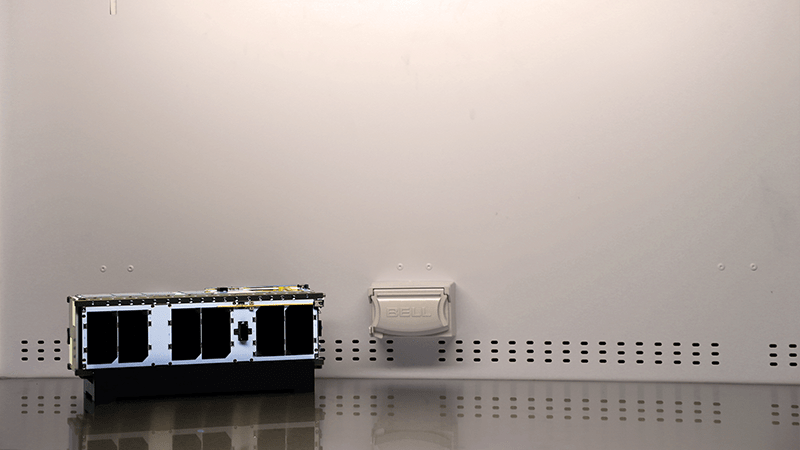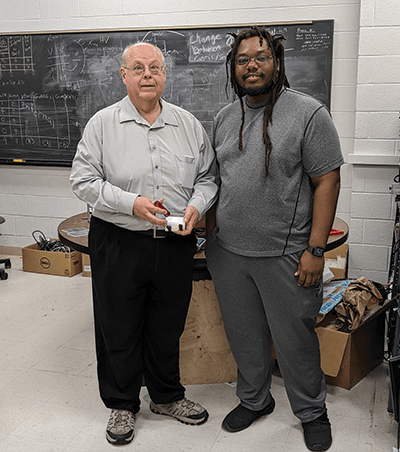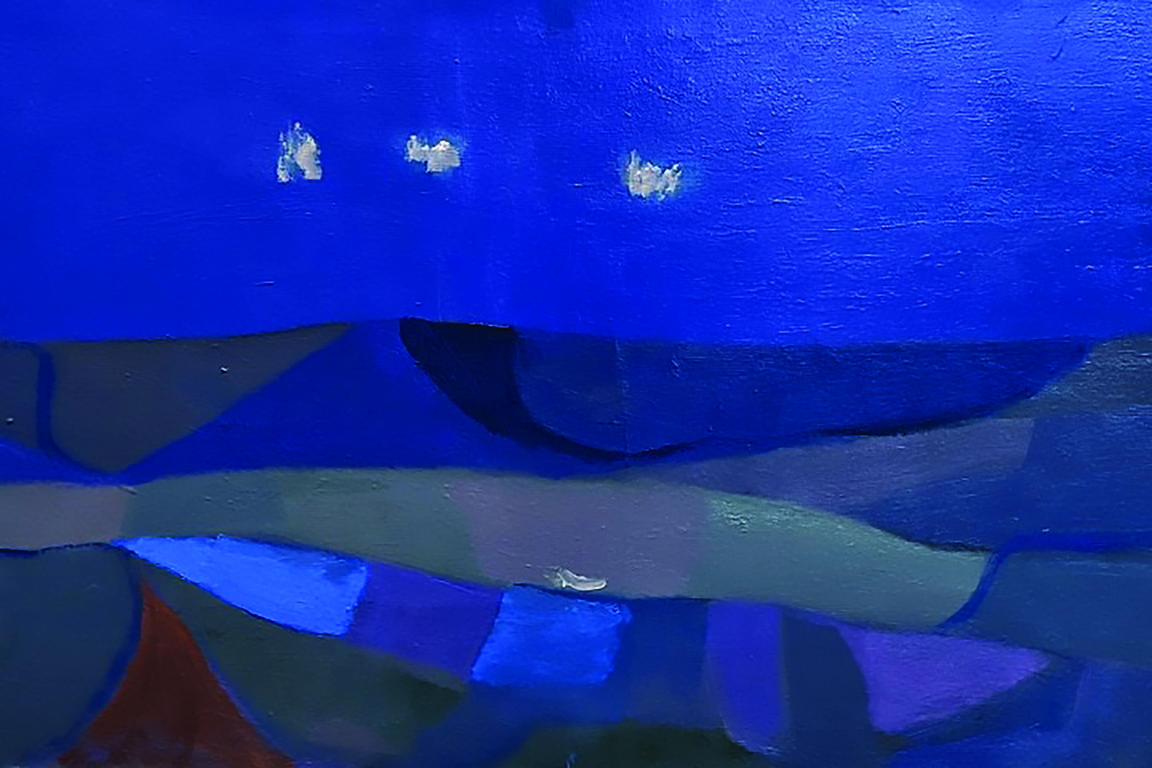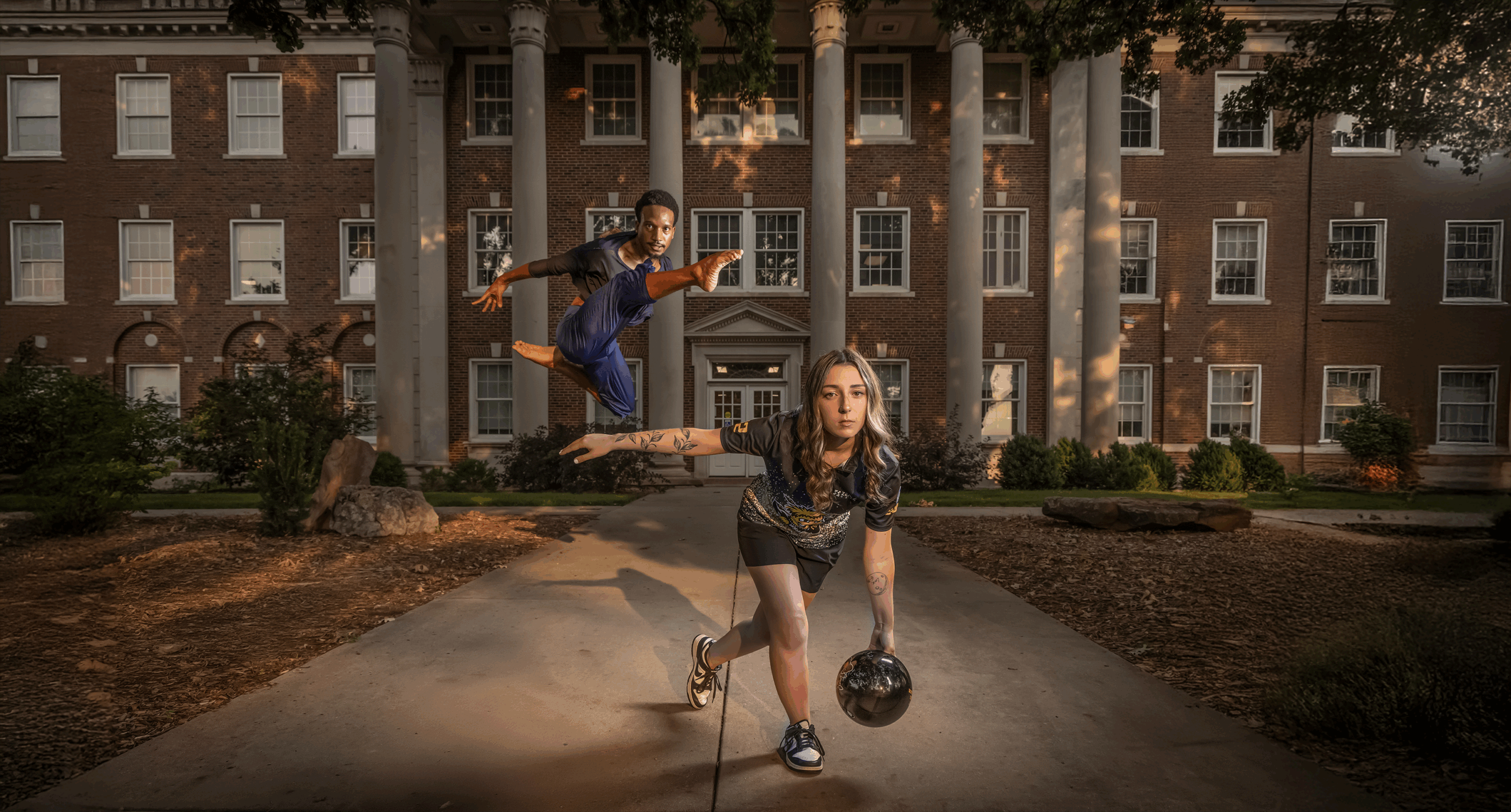It’s the nearly invisible work behind science’s big screen successes that excites these Shocker physicists

Where No One Has Gone Before
The exploration of space, the final frontier, begins and progresses with work that seldom reaches the big screen. As Tyler Nolan ’19/21, grad student in physics, and physics professor Nick Solomey well know, every Star Trek-level scientific breakthrough is borne out of a mind-bendingly massive amount of nitty-gritty detail work. But it’s precisely that kind of behind-the-scenes research that excites them.
“Research allows you to do things that no one has done before,” Solomey says. “You’re not just teaching yourself something new, but the whole human race.”
An investigator on three NASA grants, Solomey was awarded a $2 million allocation in 2021 for the design of a solar probe to investigate neutrinos – subatomic, massless and harmless particles, a hundred trillion of which pass through each of us every second. A nanosatellite, or CubeSat (shown above), delivered to campus in June will be used to flight test the probe.
Nolan, who is one of five WSU grad students working with Solomey on the neutrino project, is also working with him on a second NASA-funded project, one that will result in the capstone of his master’s studies. Awarded in May with a $133,342 slice of a $1.5 million grant, the two are developing a radiation detector that could improve the cost-efficiency of future spaceflight without sacrificing astronaut safety.

Harmful cosmic radiation poses a health threat to astronauts, increasing their risk of developing a host of degenerative defects, disorders and cancers. To monitor radiation levels, the International Space Station (ISS) is outfitted with three separate detectors: one for charged particles, one for X-rays and gamma rays, and another for neutrons. Although each is necessary, three pieces of equipment translate to three times the energy consumed, space occupied and dollars spent to launch. And at $10,000 per pound in fuel just to reach the orbital height of the ISS, no venture to space is cheap. “Our research has, thus far, been promising,” Solomey reports. “It shows the potential to turn those three bulky detectors into a single machine.”
Occupying only four-square-inches of active area, the prototype vastly decreases the weight and, in turn, cost of detecting harmful radiation. If positive preliminary results hold up, the new detector might garner additional NASA funding for cross-checking against existing ISS detectors and, farther afield, perhaps for refinement and use in the space agency’s development of architecture for missions to the Moon, Mars and beyond.
Of course, nothing is guaranteed. Hours spent programming and poring over data from oscilloscope readings may result in an impracticable detector for the space agency. But, Nolan assures, that’s an okay outcome, too. “Success in science is the doing it at all,” he says. “It’s humbling just to contribute to science and humanity and, on some level, our understanding of the universe.”



